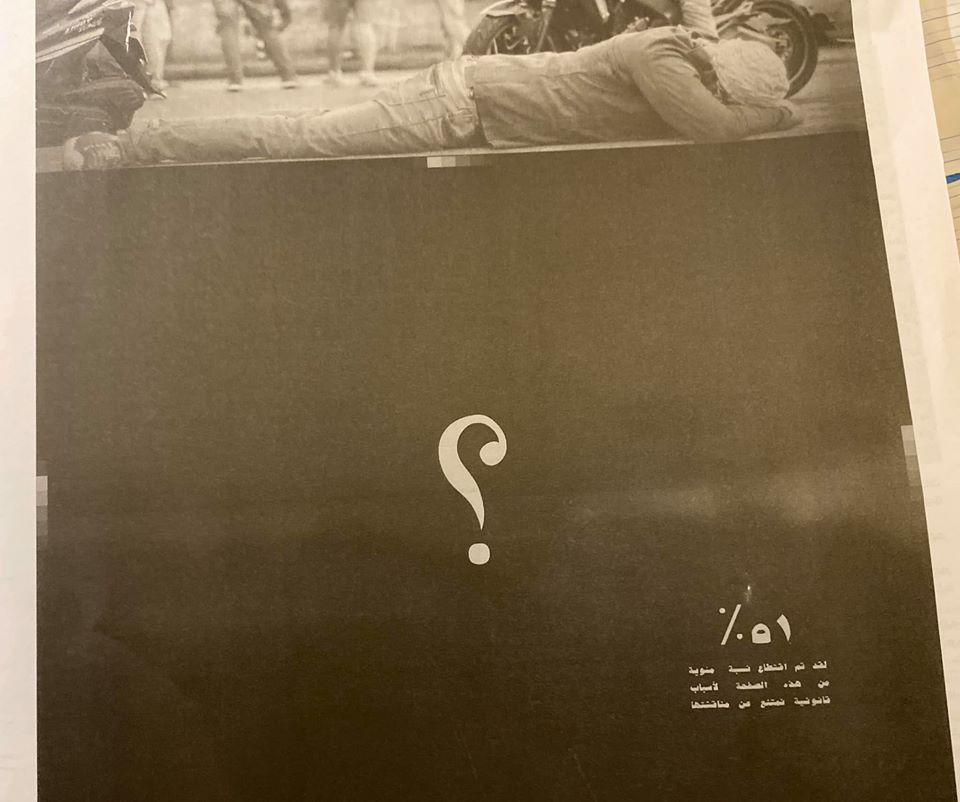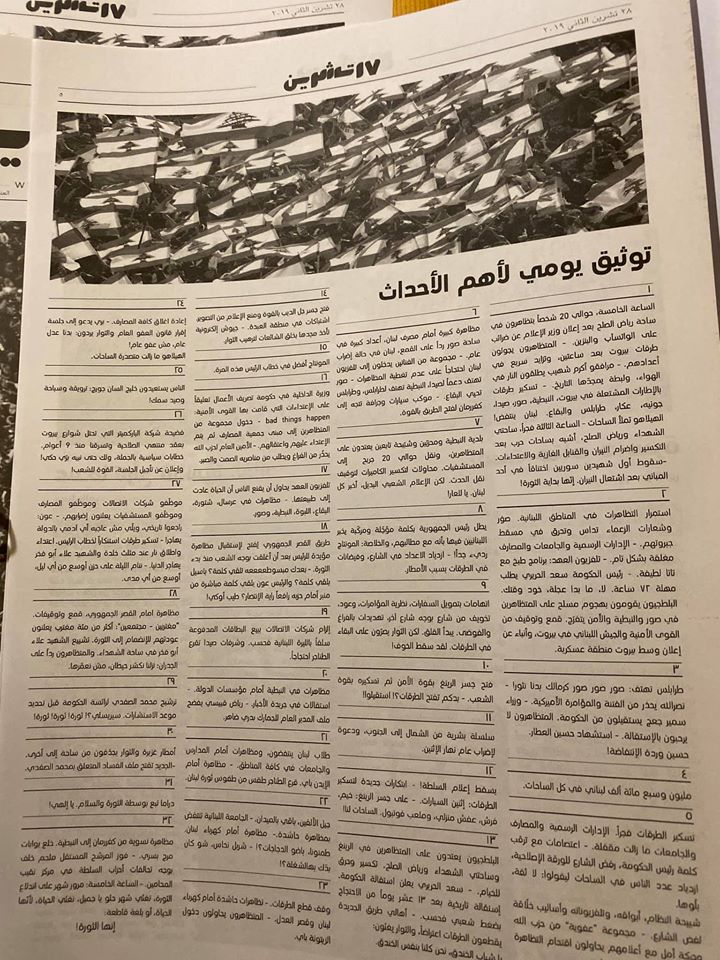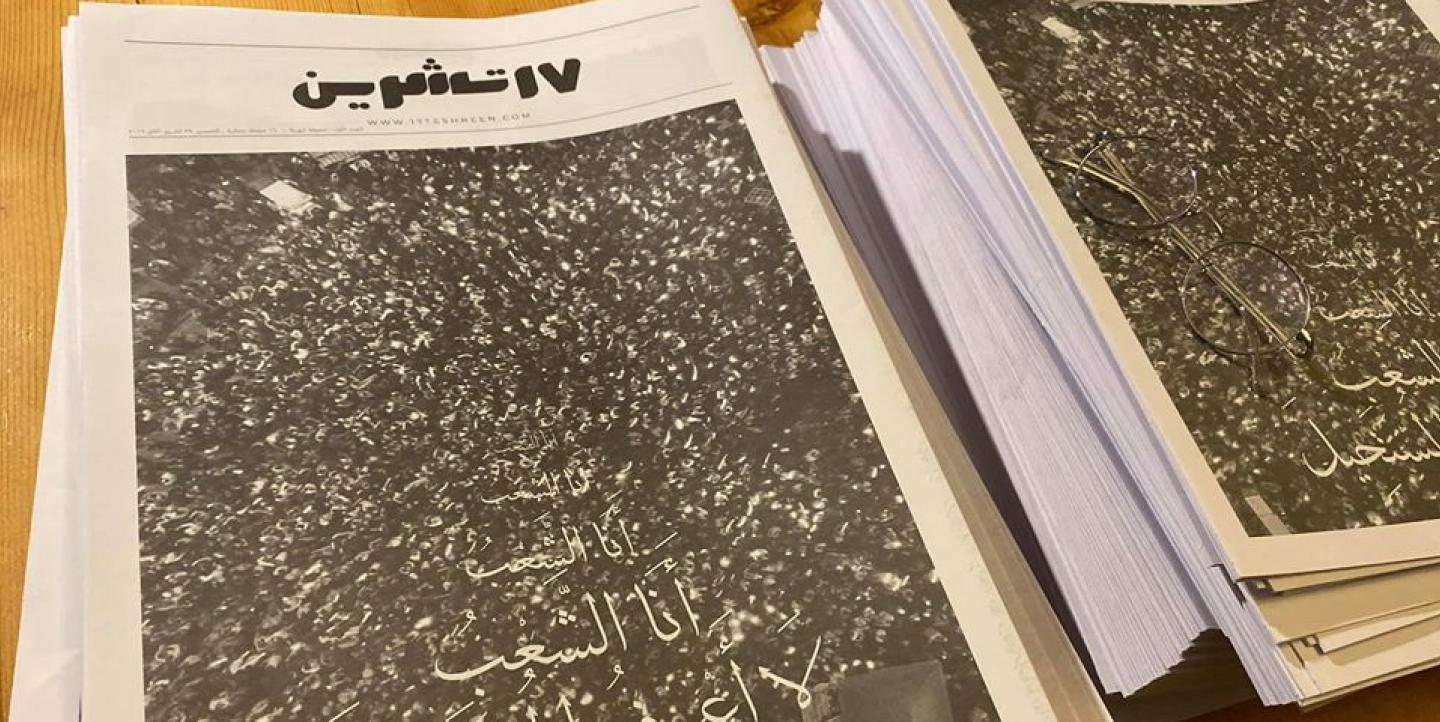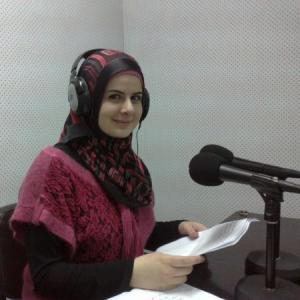There has always been a direct association between breaking down barriers in the press and popular uprisings.
We have witnessed it following the outbreak of the French revolution in 1789, which was accompanied by prosperity and a greater space for freedom of expression, and recently in Syria, which has become more open since the revolution in 2011.
In fact, according to Al Jazeera Center for Studies, the Syrian uprising has led to the publication of a number of printed newspapers. The same is true in Libya, they said, where dozens of channels, newspapers and radio stations were established after the revolution in February 2011.
What about Lebanon?
On October 17, 2019 crowds took to the streets in cities throughout Lebanon, angered by the prevalence of poverty and corruption. It was the country’s largest protest since the revolution, and has been going on for nearly three months. Despite the difference in the nature of the Lebanese uprising as compared to other Arab and European countries, the country has also seen a boom in expressive media.
For example, traditional news and media outlets have relied on information, pictures and videos that activists and citizens published on social media during the protests, and the uprising has been trending on Twitter on a regular basis.
This led a group of activists and journalists in Beirut to publish a black and white paper called Teshreen 17, which means October 17 in English, referring to the day that people first took to the streets in Lebanon. The first issue of the paper was published at the end of November.

Teshreen 17
In an interview with IJNet, Bashir Abu Zeid, the director and founder of Teshreen 17, spoke about the inspiration behind creating the journal. He said that since the beginning of the uprising, they wanted to create a space for people, especially for street protesters to express their views. That is because they do not have the opportunity to express their views in other media outlets which has limited editorial policies.
“Peace from the people, in the language of the people," wrote Abu Zeid in an editorial. He adds that the publication’s name refers to "the new birthdate of Lebanon."
The newspaper is printed at a time that many publishers are cutting back on paper editions, or getting rid of print altogether in favor of online publishing. “We want people to have a tangible piece of journalism about the revolution that they keep as a symbol that brings them together,” said Abu Zeid, explaining why they pursued print despite lack of resources.

The front page of the first issue of Teshreen 17 was drawings dedicated to the uprising’s martyrs: Hussein Al-Attar, Omar Zakaria and Alaa Abu Fakhr. They also published articles and poems, accompanied by photographs. The photos were signed with the names of the photographers in order to preserve the copyright, which is not always the case in Lebanon, as some media take photos from Google or social media without attribution.
Abu Zeid said there is a possibility of developing the project, and expanding it in the future. However, he wants it to remain an "umbrella for unity" among protesters.
“When we decided to start publishing the newspaper, we needed money to start printing,” said Abu Zeid. He collected donations from the streets, which made it possible to print the first 3,000 copies. They handed out the copies for free, and there was so much interest that the team of volunteers had to print additional copies, so they went back to the street for further donations.
The newspaper’s content includes political and social opinions and stories from the streets. The publication also documents protest slogans, and has a page dedicated to solidarity voices, which are stories written by people from the neighboring Arab countries who have experienced similar movements or revolutions.
The team is planning to publish an edition of the newspaper every month, since there is not enough funding to print it more frequently. Anyone interested in writing for the publication can go through the newspaper’s website, where anyone who has an idea for an article can pitch it to the editors who will later communicate with the sender.
Images courtesy of Teshreen 17.


